

Narrative Writing: A Complete Guide for Teachers and Students
MASTERING THE CRAFT OF NARRATIVE WRITING
Narratives build on and encourage the development of the fundamentals of writing. They also require developing an additional skill set: the ability to tell a good yarn, and storytelling is as old as humanity.
We see and hear stories everywhere and daily, from having good gossip on the doorstep with a neighbor in the morning to the dramas that fill our screens in the evening.
Good narrative writing skills are hard-won by students even though it is an area of writing that most enjoy due to the creativity and freedom it offers.
Here we will explore some of the main elements of a good story: plot, setting, characters, conflict, climax, and resolution . And we will look too at how best we can help our students understand these elements, both in isolation and how they mesh together as a whole.

WHAT IS A NARRATIVE?

A narrative is a story that shares a sequence of events , characters, and themes. It expresses experiences, ideas, and perspectives that should aspire to engage and inspire an audience.
A narrative can spark emotion, encourage reflection, and convey meaning when done well.
Narratives are a popular genre for students and teachers as they allow the writer to share their imagination, creativity, skill, and understanding of nearly all elements of writing. We occasionally refer to a narrative as ‘creative writing’ or story writing.
The purpose of a narrative is simple, to tell the audience a story. It can be written to motivate, educate, or entertain and can be fact or fiction.
A COMPLETE UNIT ON TEACHING NARRATIVE WRITING

Teach your students to become skilled story writers with this HUGE NARRATIVE & CREATIVE STORY WRITING UNIT . Offering a COMPLETE SOLUTION to teaching students how to craft CREATIVE CHARACTERS, SUPERB SETTINGS, and PERFECT PLOTS .
Over 192 PAGES of materials, including:
TYPES OF NARRATIVE WRITING
There are many narrative writing genres and sub-genres such as these.
We have a complete guide to writing a personal narrative that differs from the traditional story-based narrative covered in this guide. It includes personal narrative writing prompts, resources, and examples and can be found here.

As we can see, narratives are an open-ended form of writing that allows you to showcase creativity in many directions. However, all narratives share a common set of features and structure known as “Story Elements”, which are briefly covered in this guide.
Don’t overlook the importance of understanding story elements and the value this adds to you as a writer who can dissect and create grand narratives. We also have an in-depth guide to understanding story elements here .
CHARACTERISTICS OF NARRATIVE WRITING
Narrative structure.
ORIENTATION (BEGINNING) Set the scene by introducing your characters, setting and time of the story. Establish your who, when and where in this part of your narrative
COMPLICATION AND EVENTS (MIDDLE) In this section activities and events involving your main characters are expanded upon. These events are written in a cohesive and fluent sequence.
RESOLUTION (ENDING) Your complication is resolved in this section. It does not have to be a happy outcome, however.
EXTRAS: Whilst orientation, complication and resolution are the agreed norms for a narrative, there are numerous examples of popular texts that did not explicitly follow this path exactly.
NARRATIVE FEATURES
LANGUAGE: Use descriptive and figurative language to paint images inside your audience’s minds as they read.
PERSPECTIVE Narratives can be written from any perspective but are most commonly written in first or third person.
DIALOGUE Narratives frequently switch from narrator to first-person dialogue. Always use speech marks when writing dialogue.
TENSE If you change tense, make it perfectly clear to your audience what is happening. Flashbacks might work well in your mind but make sure they translate to your audience.
THE PLOT MAP

This graphic is known as a plot map, and nearly all narratives fit this structure in one way or another, whether romance novels, science fiction or otherwise.
It is a simple tool that helps you understand and organise a story’s events. Think of it as a roadmap that outlines the journey of your characters and the events that unfold. It outlines the different stops along the way, such as the introduction, rising action, climax, falling action, and resolution, that help you to see how the story builds and develops.
Using a plot map, you can see how each event fits into the larger picture and how the different parts of the story work together to create meaning. It’s a great way to visualize and analyze a story.
Be sure to refer to a plot map when planning a story, as it has all the essential elements of a great story.
THE 5 KEY STORY ELEMENTS OF A GREAT NARRATIVE (6-MINUTE TUTORIAL VIDEO)
This video we created provides an excellent overview of these elements and demonstrates them in action in stories we all know and love.

HOW TO WRITE A NARRATIVE

Now that we understand the story elements and how they come together to form stories, it’s time to start planning and writing your narrative.
In many cases, the template and guide below will provide enough details on how to craft a great story. However, if you still need assistance with the fundamentals of writing, such as sentence structure, paragraphs and using correct grammar, we have some excellent guides on those here.
USE YOUR WRITING TIME EFFECTIVELY: Maximize your narrative writing sessions by spending approximately 20 per cent of your time planning and preparing. This ensures greater productivity during your writing time and keeps you focused and on task.
Use tools such as graphic organizers to logically sequence your narrative if you are not a confident story writer. If you are working with reluctant writers, try using narrative writing prompts to get their creative juices flowing.
Spend most of your writing hour on the task at hand, don’t get too side-tracked editing during this time and leave some time for editing. When editing a narrative, examine it for these three elements.
- Spelling and grammar ( Is it readable?)
- Story structure and continuity ( Does it make sense, and does it flow? )
- Character and plot analysis. (Are your characters engaging? Does your problem/resolution work? )
1. SETTING THE SCENE: THE WHERE AND THE WHEN

The story’s setting often answers two of the central questions in the story, namely, the where and the when. The answers to these two crucial questions will often be informed by the type of story the student is writing.
The story’s setting can be chosen to quickly orient the reader to the type of story they are reading. For example, a fictional narrative writing piece such as a horror story will often begin with a description of a haunted house on a hill or an abandoned asylum in the middle of the woods. If we start our story on a rocket ship hurtling through the cosmos on its space voyage to the Alpha Centauri star system, we can be reasonably sure that the story we are embarking on is a work of science fiction.
Such conventions are well-worn clichés true, but they can be helpful starting points for our novice novelists to make a start.
Having students choose an appropriate setting for the type of story they wish to write is an excellent exercise for our younger students. It leads naturally onto the next stage of story writing, which is creating suitable characters to populate this fictional world they have created. However, older or more advanced students may wish to play with the expectations of appropriate settings for their story. They may wish to do this for comic effect or in the interest of creating a more original story. For example, opening a story with a children’s birthday party does not usually set up the expectation of a horror story. Indeed, it may even lure the reader into a happy reverie as they remember their own happy birthday parties. This leaves them more vulnerable to the surprise element of the shocking action that lies ahead.
Once the students have chosen a setting for their story, they need to start writing. Little can be more terrifying to English students than the blank page and its bare whiteness stretching before them on the table like a merciless desert they must cross. Give them the kick-start they need by offering support through word banks or writing prompts. If the class is all writing a story based on the same theme, you may wish to compile a common word bank on the whiteboard as a prewriting activity. Write the central theme or genre in the middle of the board. Have students suggest words or phrases related to the theme and list them on the board.
You may wish to provide students with a copy of various writing prompts to get them started. While this may mean that many students’ stories will have the same beginning, they will most likely arrive at dramatically different endings via dramatically different routes.

A bargain is at the centre of the relationship between the writer and the reader. That bargain is that the reader promises to suspend their disbelief as long as the writer creates a consistent and convincing fictional reality. Creating a believable world for the fictional characters to inhabit requires the student to draw on convincing details. The best way of doing this is through writing that appeals to the senses. Have your student reflect deeply on the world that they are creating. What does it look like? Sound like? What does the food taste like there? How does it feel like to walk those imaginary streets, and what aromas beguile the nose as the main character winds their way through that conjured market?
Also, Consider the when; or the time period. Is it a future world where things are cleaner and more antiseptic? Or is it an overcrowded 16th-century London with human waste stinking up the streets? If students can create a multi-sensory installation in the reader’s mind, then they have done this part of their job well.
Popular Settings from Children’s Literature and Storytelling
- Fairytale Kingdom
- Magical Forest
- Village/town
- Underwater world
- Space/Alien planet
2. CASTING THE CHARACTERS: THE WHO
Now that your student has created a believable world, it is time to populate it with believable characters.
In short stories, these worlds mustn’t be overpopulated beyond what the student’s skill level can manage. Short stories usually only require one main character and a few secondary ones. Think of the short story more as a small-scale dramatic production in an intimate local theater than a Hollywood blockbuster on a grand scale. Too many characters will only confuse and become unwieldy with a canvas this size. Keep it simple!
Creating believable characters is often one of the most challenging aspects of narrative writing for students. Fortunately, we can do a few things to help students here. Sometimes it is helpful for students to model their characters on actual people they know. This can make things a little less daunting and taxing on the imagination. However, whether or not this is the case, writing brief background bios or descriptions of characters’ physical personality characteristics can be a beneficial prewriting activity. Students should give some in-depth consideration to the details of who their character is: How do they walk? What do they look like? Do they have any distinguishing features? A crooked nose? A limp? Bad breath? Small details such as these bring life and, therefore, believability to characters. Students can even cut pictures from magazines to put a face to their character and allow their imaginations to fill in the rest of the details.
Younger students will often dictate to the reader the nature of their characters. To improve their writing craft, students must know when to switch from story-telling mode to story-showing mode. This is particularly true when it comes to character. Encourage students to reveal their character’s personality through what they do rather than merely by lecturing the reader on the faults and virtues of the character’s personality. It might be a small relayed detail in the way they walk that reveals a core characteristic. For example, a character who walks with their head hanging low and shoulders hunched while avoiding eye contact has been revealed to be timid without the word once being mentioned. This is a much more artistic and well-crafted way of doing things and is less irritating for the reader. A character who sits down at the family dinner table immediately snatches up his fork and starts stuffing roast potatoes into his mouth before anyone else has even managed to sit down has revealed a tendency towards greed or gluttony.
Understanding Character Traits
Again, there is room here for some fun and profitable prewriting activities. Give students a list of character traits and have them describe a character doing something that reveals that trait without ever employing the word itself.
It is also essential to avoid adjective stuffing here. When looking at students’ early drafts, adjective stuffing is often apparent. To train the student out of this habit, choose an adjective and have the student rewrite the sentence to express this adjective through action rather than telling.
When writing a story, it is vital to consider the character’s traits and how they will impact the story’s events. For example, a character with a strong trait of determination may be more likely to overcome obstacles and persevere. In contrast, a character with a tendency towards laziness may struggle to achieve their goals. In short, character traits add realism, depth, and meaning to a story, making it more engaging and memorable for the reader.
Popular Character Traits in Children’s Stories
- Determination
- Imagination
- Perseverance
- Responsibility
We have an in-depth guide to creating great characters here , but most students should be fine to move on to planning their conflict and resolution.
3. NO PROBLEM? NO STORY! HOW CONFLICT DRIVES A NARRATIVE

This is often the area apprentice writers have the most difficulty with. Students must understand that without a problem or conflict, there is no story. The problem is the driving force of the action. Usually, in a short story, the problem will center around what the primary character wants to happen or, indeed, wants not to happen. It is the hurdle that must be overcome. It is in the struggle to overcome this hurdle that events happen.
Often when a student understands the need for a problem in a story, their completed work will still not be successful. This is because, often in life, problems remain unsolved. Hurdles are not always successfully overcome. Students pick up on this.
We often discuss problems with friends that will never be satisfactorily resolved one way or the other, and we accept this as a part of life. This is not usually the case with writing a story. Whether a character successfully overcomes his or her problem or is decidedly crushed in the process of trying is not as important as the fact that it will finally be resolved one way or the other.
A good practical exercise for students to get to grips with this is to provide copies of stories and have them identify the central problem or conflict in each through discussion. Familiar fables or fairy tales such as Three Little Pigs, The Boy Who Cried Wolf, Cinderella, etc., are great for this.
While it is true that stories often have more than one problem or that the hero or heroine is unsuccessful in their first attempt to solve a central problem, for beginning students and intermediate students, it is best to focus on a single problem, especially given the scope of story writing at this level. Over time students will develop their abilities to handle more complex plots and write accordingly.
Popular Conflicts found in Children’s Storytelling.
- Good vs evil
- Individual vs society
- Nature vs nurture
- Self vs others
- Man vs self
- Man vs nature
- Man vs technology
- Individual vs fate
- Self vs destiny
Conflict is the heart and soul of any good story. It’s what makes a story compelling and drives the plot forward. Without conflict, there is no story. Every great story has a struggle or a problem that needs to be solved, and that’s where conflict comes in. Conflict is what makes a story exciting and keeps the reader engaged. It creates tension and suspense and makes the reader care about the outcome.
Like in real life, conflict in a story is an opportunity for a character’s growth and transformation. It’s a chance for them to learn and evolve, making a story great. So next time stories are written in the classroom, remember that conflict is an essential ingredient, and without it, your story will lack the energy, excitement, and meaning that makes it truly memorable.
4. THE NARRATIVE CLIMAX: HOW THINGS COME TO A HEAD!

The climax of the story is the dramatic high point of the action. It is also when the struggles kicked off by the problem come to a head. The climax will ultimately decide whether the story will have a happy or tragic ending. In the climax, two opposing forces duke things out until the bitter (or sweet!) end. One force ultimately emerges triumphant. As the action builds throughout the story, suspense increases as the reader wonders which of these forces will win out. The climax is the release of this suspense.
Much of the success of the climax depends on how well the other elements of the story have been achieved. If the student has created a well-drawn and believable character that the reader can identify with and feel for, then the climax will be more powerful.
The nature of the problem is also essential as it determines what’s at stake in the climax. The problem must matter dearly to the main character if it matters at all to the reader.
Have students engage in discussions about their favorite movies and books. Have them think about the storyline and decide the most exciting parts. What was at stake at these moments? What happened in your body as you read or watched? Did you breathe faster? Or grip the cushion hard? Did your heart rate increase, or did you start to sweat? This is what a good climax does and what our students should strive to do in their stories.
The climax puts it all on the line and rolls the dice. Let the chips fall where the writer may…
Popular Climax themes in Children’s Stories
- A battle between good and evil
- The character’s bravery saves the day
- Character faces their fears and overcomes them
- The character solves a mystery or puzzle.
- The character stands up for what is right.
- Character reaches their goal or dream.
- The character learns a valuable lesson.
- The character makes a selfless sacrifice.
- The character makes a difficult decision.
- The character reunites with loved ones or finds true friendship.
5. RESOLUTION: TYING UP LOOSE ENDS
After the climactic action, a few questions will often remain unresolved for the reader, even if all the conflict has been resolved. The resolution is where those lingering questions will be answered. The resolution in a short story may only be a brief paragraph or two. But, in most cases, it will still be necessary to include an ending immediately after the climax can feel too abrupt and leave the reader feeling unfulfilled.
An easy way to explain resolution to students struggling to grasp the concept is to point to the traditional resolution of fairy tales, the “And they all lived happily ever after” ending. This weather forecast for the future allows the reader to take their leave. Have the student consider the emotions they want to leave the reader with when crafting their resolution.
While the action is usually complete by the end of the climax, it is in the resolution that if there is a twist to be found, it will appear – think of movies such as The Usual Suspects. Pulling this off convincingly usually requires considerable skill from a student writer. Still, it may well form a challenging extension exercise for those more gifted storytellers among your students.
Popular Resolutions in Children’s Stories
- Our hero achieves their goal
- The character learns a valuable lesson
- A character finds happiness or inner peace.
- The character reunites with loved ones.
- Character restores balance to the world.
- The character discovers their true identity.
- Character changes for the better.
- The character gains wisdom or understanding.
- Character makes amends with others.
- The character learns to appreciate what they have.
Once students have completed their story, they can edit for grammar, vocabulary choice, spelling, etc., but not before!
As mentioned, there is a craft to storytelling, as well as an art. When accurate grammar, perfect spelling, and immaculate sentence structures are pushed at the outset, they can cause storytelling paralysis. For this reason, it is essential that when we encourage the students to write a story, we give them license to make mechanical mistakes in their use of language that they can work on and fix later.
Good narrative writing is a very complex skill to develop and will take the student years to become competent. It challenges not only the student’s technical abilities with language but also her creative faculties. Writing frames, word banks, mind maps, and visual prompts can all give valuable support as students develop the wide-ranging and challenging skills required to produce a successful narrative writing piece. But, at the end of it all, as with any craft, practice and more practice is at the heart of the matter.
TIPS FOR WRITING A GREAT NARRATIVE
- Start your story with a clear purpose: If you can determine the theme or message you want to convey in your narrative before starting it will make the writing process so much simpler.
- Choose a compelling storyline and sell it through great characters, setting and plot: Consider a unique or interesting story that captures the reader’s attention, then build the world and characters around it.
- Develop vivid characters that are not all the same: Make your characters relatable and memorable by giving them distinct personalities and traits you can draw upon in the plot.
- Use descriptive language to hook your audience into your story: Use sensory language to paint vivid images and sequences in the reader’s mind.
- Show, don’t tell your audience: Use actions, thoughts, and dialogue to reveal character motivations and emotions through storytelling.
- Create a vivid setting that is clear to your audience before getting too far into the plot: Describe the time and place of your story to immerse the reader fully.
- Build tension: Refer to the story map earlier in this article and use conflict, obstacles, and suspense to keep the audience engaged and invested in your narrative.
- Use figurative language such as metaphors, similes, and other literary devices to add depth and meaning to your narrative.
- Edit, revise, and refine: Take the time to refine and polish your writing for clarity and impact.
- Stay true to your voice: Maintain your unique perspective and style in your writing to make it your own.
NARRATIVE WRITING EXAMPLES (Student Writing Samples)
Below are a collection of student writing samples of narratives. Click on the image to enlarge and explore them in greater detail. Please take a moment to read these creative stories in detail and the teacher and student guides which highlight some of the critical elements of narratives to consider before writing.
Please understand these student writing samples are not intended to be perfect examples for each age or grade level but a piece of writing for students and teachers to explore together to critically analyze to improve student writing skills and deepen their understanding of story writing.
We recommend reading the example either a year above or below, as well as the grade you are currently working with, to gain a broader appreciation of this text type.

NARRATIVE WRITING PROMPTS (Journal Prompts)
When students have a great journal prompt, it can help them focus on the task at hand, so be sure to view our vast collection of visual writing prompts for various text types here or use some of these.
- On a recent European trip, you find your travel group booked into the stunning and mysterious Castle Frankenfurter for a single night… As night falls, the massive castle of over one hundred rooms seems to creak and groan as a series of unexplained events begin to make you wonder who or what else is spending the evening with you. Write a narrative that tells the story of your evening.
- You are a famous adventurer who has discovered new lands; keep a travel log over a period of time in which you encounter new and exciting adventures and challenges to overcome. Ensure your travel journal tells a story and has a definite introduction, conflict and resolution.
- You create an incredible piece of technology that has the capacity to change the world. As you sit back and marvel at your innovation and the endless possibilities ahead of you, it becomes apparent there are a few problems you didn’t really consider. You might not even be able to control them. Write a narrative in which you ride the highs and lows of your world-changing creation with a clear introduction, conflict and resolution.
- As the final door shuts on the Megamall, you realise you have done it… You and your best friend have managed to sneak into the largest shopping centre in town and have the entire place to yourselves until 7 am tomorrow. There is literally everything and anything a child would dream of entertaining themselves for the next 12 hours. What amazing adventures await you? What might go wrong? And how will you get out of there scot-free?
- A stranger walks into town… Whilst appearing similar to almost all those around you, you get a sense that this person is from another time, space or dimension… Are they friends or foes? What makes you sense something very strange is going on? Suddenly they stand up and walk toward you with purpose extending their hand… It’s almost as if they were reading your mind.
NARRATIVE WRITING VIDEO TUTORIAL

Teaching Resources
Use our resources and tools to improve your student’s writing skills through proven teaching strategies.
When teaching narrative writing, it is essential that you have a range of tools, strategies and resources at your disposal to ensure you get the most out of your writing time. You can find some examples below, which are free and paid premium resources you can use instantly without any preparation.
FREE Narrative Graphic Organizer

THE STORY TELLERS BUNDLE OF TEACHING RESOURCES

A MASSIVE COLLECTION of resources for narratives and story writing in the classroom covering all elements of crafting amazing stories. MONTHS WORTH OF WRITING LESSONS AND RESOURCES, including:
NARRATIVE WRITING CHECKLIST BUNDLE

OTHER GREAT ARTICLES ABOUT NARRATIVE WRITING

Narrative Writing for Kids: Essential Skills and Strategies

7 Great Narrative Lesson Plans Students and Teachers Love

Top 7 Narrative Writing Exercises for Students

How to Write a Scary Story
Squarehead Teachers
Free teacher stuff to get your elementary classroom all squared away.

60 Narrative Writing Prompts for Kids

2. Write to tell of a day when you were the teacher. What did you do?
3. Write a story about trading places with your favorite TV, movie, or rock star.
4. One day a spaceship lands on the playground of your school . . .
5. Your shoe must have a story to tell. Tell it.
6. Your class grew plants as a science project. One day you looked at your plant and saw
something really strange had grown there.
7. Write a story about what it would be like if you woke up one morning with wings.
8. On your birthday, a strange-looking lady came to you door and handed you a wrapped present. You rattled it. It made a noise. Write a story about this present.
9. Your teacher one day announced that your class was going on a wonderful field trip. Write a story about this field trip. In your story, you can have your class go anywhere you wish.
10. One day, as you were petting and talking to your friend’s dog, it answered back! Write a story about this.
11. Write a story about yourself as a hero. What did you do to become a hero? Tell your story.
12. As you walked down the hallway at school, you heard some strange music coming from the custodian’s closet. What was it? Write a story about it.
13. Tell a story about children who live in a world where there is no such thing as television, computers, or electronic games.
14. A distant relative bequeathed you a strange ring. As you put this ring on, you discover that it has strange powers. What does it look like? What does it do? Tell a story about this ring.
15. Tell a story about your ideal place to live. What would it be like to live here?
16. The teacher comes into the room and places a bag on her desk then leaves. The bag moves and wriggles. Write a story about what is in the paper bag.
17. Everyone has a day in his or her life that was extra special or dreams about what he or she would do on a special day. Write a story about a special day you have had or imagine you might have.
18. Every day you pass a door. It’s always closed and locked. One day, as you pass, you notice that the door is open. You step inside. Write a story about what was on the other side of that door.
19. Tell a story about what happened when you traveled on a wagon pulled by horses.
20. Tell a story about a day in which everything went wrong.
21. Imagine you could travel to the future and live there. Think of what you think the future would be like. How different would it be from today? Now, write a story about living in the future.
22. Imagine you could go to any place you wanted for as long as you wanted any time you wanted. What place would you visit? Think about what you would do there. Write a story about a visit to a really neat place.
23. Pretend that you lived in colonial times. Think about what your life would be like, how it would be different living more than 200 years ago. Now, write a story about a young person (or yourself) living in George Washington’s day.
24. Novels are fun to read because the action keeps you interested, and the characters almost become your friends. Think of a book you really liked. Imagine that you were a new character in this book {choose a book your class has read}. Write a story about what happened.
25. Imagine you woke up one morning and found that you had switched places with a dog or a cat. Think what it would be like. What would you do? Write a story of your day as a dog or a cat.
26. What if you had a personal genie who would grant your every wish? What would your life be like? Think of some of the details. Write a story about having a personal genie.
27. Imagine you had a car that would take you anywhere you wanted to go for one day. Think of where you went in that car and what you did. Write a story about that day.
28. Everyone has a favorite season of the year. What is your favorite season? What do you like to do? Write a story about your favorite season.
29. Imagine one morning there’s a knock at your front door. You open the door, and to your great surprise, you find an alien standing there. What do you do? What does it look like? Write
a story about your encounter with this alien.
30. On your way to school one morning you see a huge truck speeding down the road. Suddenly, the back door of the truck opens and a large, mysterious box falls off the back of the truck. It sits there in the road. What is in the box? What do you do? Write a story about this mysterious box.
31. One spring day a skunk wanders into your classroom. What are the results? Write a story about the skunk that visited school.
32. Imagine you had a time machine that you could take only to the past. Where would you choose to go? Think of what you would do there, what it would the like. Write a story of your adventure in the past.
33. One day you are sitting under a large tree. An acorn hits you on the head, and you look up. There, on the branch above you sits a squirrel, laughing at you. The squirrel then looks you square in the eye, begins to talk to you, and asks you to return its acorn. What would you do?
What would happen if you encountered a talking squirrel? Write a story about the experience.
34. Imagine a world where there was no money. What would people do? What would life be like? Write a story about living in a world without any money.
35. There are times when we all wish, even for just a moment, that we could be someone else for a day. Who would you choose to be for that day? What would you do? Think of some details of your day. Now write a story about what your day was like as that person.
36. In a recent disaster, there were some kids who did some heroic things. Think what constitutes (makes) a hero. Imagine yourself as one. Now write a story in which you were a hero/heroine in a tough situation.
37. A little old lady gave you and a friend some magical glitter and told you to sprinkle it on your hair and something special would happen. What happened when you tried it? Write a story about this mysterious magical glitter.
38. One day you and your friends walked up to an old, seemingly abandoned house. You couldn’t see inside due to the dust and cobwebs on the windows. You decide to see if the door is locked. You try the knob, and it turns. The door creeks open as if it has not opened in years . . . What happens next? What do you find? What do you and your friend do? Write a story about entering that old, seemingly abandoned house.
39. Love comes in all forms. We can love our parents, a boyfriend or girlfriend, a favorite pet, a brother or sister, a place, even a thing. Thing about someone or something you love. Write a story about that person or thing that involves your feelings.
40. Imagine that your sense of smell was more highly developed than everyone else’s. What experiences might you have? How might your life change? What would you be able to smell? Write a story about a person with a very highly developed sense of smell.
41. Imagine yourself temporarily lost in a foreign country where you do not know the language. How do you manage to communicate? What might happen to you? Write a story about a day you might have spent lost in a foreign country without knowing the language.
42. Imagine a city project to have every school student do some hours of community service as a part of the required curriculum. What would you choose to do? What do you think it would be like? What people might you meet? What would you be doing to help? Write a story about your day of community service.
43. Sometimes family members or friends embarrass you when other people are around. Think of some times this has happened to you. Think of what could happen. Write a story about some embarrassing incident you might have had and how you coped with it.
44. Now and then you, without meaning to do so, break something that belongs to someone else. Think about what might be broken. Think about what might happen as a result. Now, write a story about accidentally breaking something that belonged to someone else and the story of what happened as a result.
45. One day your teacher must go home. Your teacher leaves, telling you that someone else will teach the class for the rest of the time. Who do you think will replace the teacher? What happens as a result? Write a story about a time your teacher had to go home, and someone
else took over the class.
46. Imagine you opened your own restaurant. Tell the name of your restaurant. Explain what the restaurant looks like, who works there, and what you serve.
47. Describe your favorite character from a book, a movie, or television.
48. Write a story titled, “My Journey on a Pirate Ship.” You and your friends can star in the story.
49. If you could have any animal for a pet, what would it be? Describe the pet and how you would take care of it.
50. Do you have any brothers or sisters? If you do, tell what they’re like. If not, tell whether or not you would like to have a brother or sister.
51. If you could have lunch with any famous person who would it be? What would you talk about with this person?
52. How old were you four years ago? Describe some things you can do now that you could not do then.
53. If you could be on any game show, what would it be? Describe what happens when you’re on the show.
54. Describe several ways a person your age can earn money.
55. If you could spend an afternoon with one member of your extended family, who would it be? Tell why you chose this person and tell what you do together.
56. Which superpower would you most like to have– invisibility, super strength, or the ability to fly? Describe what kids of things you would do with your powers.
57. Think of a time when you’ve won something. Tell what you won and how you won it.
58. Invent a new kind of sandwich. Describe what is on it and how you would make it.
59. Describe one thing you’re really good at.
60. Imagine you were twenty feet tall. Describe what life would be like. How would it be different from your life now?
Share this:
- Click to share on Pinterest (Opens in new window)
- Click to email a link to a friend (Opens in new window)
- Click to share on Facebook (Opens in new window)
- Click to share on Twitter (Opens in new window)
- Click to share on Tumblr (Opens in new window)
- Click to print (Opens in new window)
- Click to share on LinkedIn (Opens in new window)
- Click to share on Reddit (Opens in new window)
- Click to share on Pocket (Opens in new window)
103 thoughts on “ 60 Narrative Writing Prompts for Kids ”
Fantastic! I love the variety of topics. 🙂
it is the best narrative ideas!:)
Thank you! Happy to share!
hi i like this
Why nothing about gi joe
Yeah, there pretty good!
Good job to Squarehead Teachers for making this.
It’s meh not a lot of depth to the prompts kids have trouble carrying it on to a story without rambling on and on
Ok that’s a little harsh ;-;
you’re nice
Please leave a comment (No sign-in required). Thanks! Cancel reply
This site uses Akismet to reduce spam. Learn how your comment data is processed .
- Already have a WordPress.com account? Log in now.
- Subscribe Subscribed
- Copy shortlink
- Report this content
- View post in Reader
- Manage subscriptions
- Collapse this bar

Narrative Writing Prompts to Assign Your Students: 10 Writing Prompts for Narrative Essays

While I am a huge advocate of assigning writing to students at the beginning of the school year , middle school ELA and high school English teachers can assign narrative writing at any point in the year. In this blog post, I’m going to share 10 narrative writing prompts with you!
Teaching students about narrative writing and assigning a narrative writing project helps students work on their creativity, while also focusing on important literary elements. I explain to my students that just like the short stories that we read and analyze in class, they also need to create a setting that enhances the lot. Just like the short stories we read and analyze in class, they also need to fully develop the protagonist and antagonist.
Once students see this connection, they become stronger readers and writers. To help with this concept, my narrative writing teaching unit helps walk students step-by-step throughout the process.
Here are 10 narrative writing prompts to consider using in your classroom.
Personal narrative prompts.
When I choose one of these personal narrative writing prompts, since I teach high school, I also explain to my students that they most likely will be able to use some of what they’ve written for a college admissions essay or scholarship essay.
- Write about a time when you worked hard toward accomplishing a goal. Tell the story about the goal, why you set the goal, the steps you took to accomplish the goal, and how you felt once it was accomplished.
- Write about the accomplishment you are most proud of. In your narrative, explain your accomplishment, describe why you are most proud of it, and tell the story surrounding it.
- Write about a time when you experienced hardship or failure. In your narrative, elaborate on the hardship. Explain the events and your feelings surrounding the hardship or failure, and how you have grown from the experience.
- Write about your best childhood memory. In your narrative, tell the story of that memory.
- Write about an event from your past that has shaped the person who you are today. In your narrative, tell the story surrounding that event and explain its significance on who you are today.
Fictional Narrative Prompts

- The day started out like any other. However, as soon as I woke up, I quickly realized…
- Two characters explore an area in a field. During their explorations, they find a secret passage, a sort of tunnel to a new dimension. The characters step into the tunnel and are immediately transported to…
- Choose your favorite fictional character from any fairy tale or superhero story and write an alternate story for that character.
- The clock was tickly so slowly. It seemed as if time was moving backward and now forwards…
- Cautiously, she/he/they opened the door and stepped inside. There was no going back now…
Teach Narrative Writing in Your Secondary ELA Classroom
Engage your students in this exciting and comprehensive narrative writing unit! This standards-based narrative writing unit includes materials for both a personal narrative and a fictional narrative and includes everything you need to teach narrative writing to your middle and high school students, including both the print and digital files!
Walk your students step-by-step through the writing process with the materials in this unit. From brainstorming and organizing to peer editing, this narrative writing unit has it all!
Here is what fellow teachers say about this narrative writing unit!

“This was an excellent resource for narrative writing in my special education class. My students use the Amplify ELA curriculum, but struggle with writing. Our first unit was in writing narratives, so I chose this resource to help break down the parts of their story by focusing on characters, settings, conflict, and planning out the plot separately. The result was more well thought out responses to their prompt. The slideshow for instruction was also well made and easy to read. Thank you!”
⭐️⭐️⭐️⭐️⭐️ Extremely satisfied
“ I used this as part my short story writing unit with my grade eights. It was an excellent way to set up their stories. I wanted to make sure my students really know all parts of their story before sitting down to writing their first draft. This resource really helped them get to know all aspects of their story.”
“ Teaching narrative writing is definitely NOT my strength! However, this resource made it so much easier!! Piecing together our stories by plot elements was so effective in getting my students on the path to creating some awesome stories! I will never teach narrative any other way! This is it!”
Join the Daring English Teacher community!
Subscribe to receive freebies, teaching ideas, and my latest content by email.
I won’t send you spam. Unsubscribe at any time.
Built with ConvertKit
Leave a Reply Cancel reply
Your email address will not be published. Required fields are marked *
Save my name, email, and website in this browser for the next time I comment.

SUBSCRIBE NOW

Teaching Narrative Writing – Tips and Ideas
Teaching narrative writing is one of my favorite things! Teaching writing is a challenge–but when students get engaged and can be creative, it’s our way to hook them!
If you want to read about some GREAT narrative teaching tips, head over to my blog post on Upper Elementary Snapshots.
Check out my ideas about teaching leads, reviewing other skills, a quick writing revision idea–and more! Here’s a sneak peek at part of it…
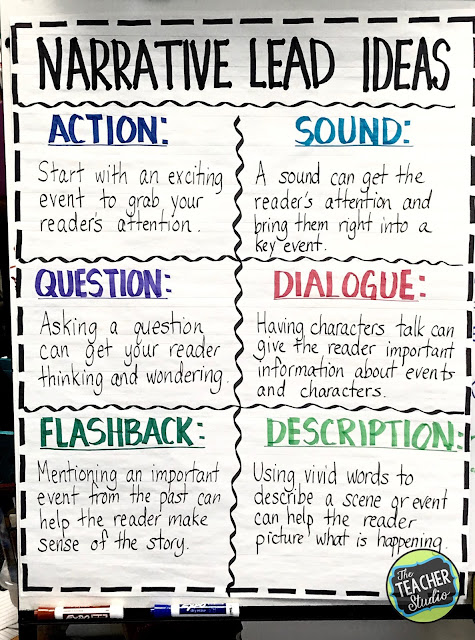
Stop by if you want to check out what I did with our second narrative writing unit of the year. This is really one of my favorite writing activities because it is SO accessible to all students and is a great review of previously taught narrative writing skills. If you want to read more–just click HERE to take you to the post.
Want to read even more about teaching narrative writing? I have a few more posts for you!
Here’s a great post about planning narrative writing.
How about teaching dialogue? Here’s a great post with some wonderful tips about incorporating dialogue.
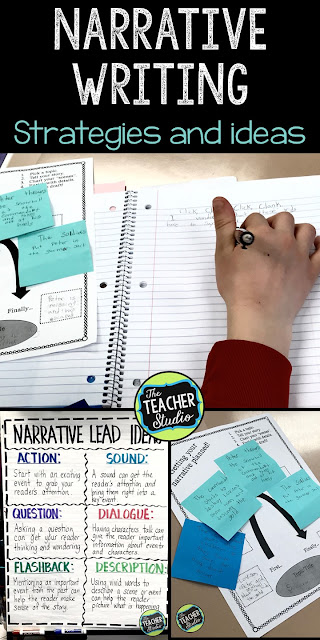
SHARE THIS POST:

Teaching Test Prep Strategies

Teaching Historical Fiction

Great books for back to school!

Quick Links
- The Teacher Studio 2024
- Site Design By Laine Sutherland Designs
Terrific Teaching Tactics
Make Learning Fun
Narrative Writing Prompts and Worksheets
Are you looking for resources to teach narrative writing? I have you covered! Check out my Narrative Writing Prompts & Worksheets for the kindergarten-4th grade. There is a variety of prompts and worksheets to use in your room. Plus they are low-prep; just print and teach!

KINDERGARTEN Narrative WRITING PROMPTS AND WORKSHEETS
Teaching narrative writing can be difficult in kindergarten since they are working on handwriting, letters, sounds, and sight words. I have created some simple worksheets and writing prompts for little learners that will encourage them to use their imagination and practice their writing skills!

Students can draw pictures to represent their narratives. They can also write one word answers to prompts (either on their own, with adult support, or copied from the teacher). Drawing illustrations is the first step that kinders need to take towards becoming great writers.

Next, they can begin to write a single sentence (perhaps with adult support or dictation). But either way, it’s important for kindergarten students to verbally share their stories and represent their narratives in written or picture format.
When I created these narrative writing prompts and worksheets , I made sure that there are lots of options. Some prompts are easier and others are less scaffolded. The options are –
1.) Look at the pictures and write a word or sentence for each one
2.) Draw two pictures and write two parts of a story
3.) Draw a picture and complete the sentence on dotted lines
4.) Draw a picture and write on dotted lines
5.) Draw three pictures and write a sentence for three parts of a narrative
You can pick the format that suits your students. Meet them where they are at!
Here’s a look at the common core standard for kindergarten narrative writing:
KINDERGARTEN
CCSS.ELA-LITERACY.W.K.3 Use a combination of drawing, dictating, and writing to narrate a single event or several loosely linked events, tell about the events in the order in which they occurred, and provide a reaction to what happened.
“This resource will really help students with narrative writing!” – Christie M .
Click here to check out my kindergarten narrative writing prompts and worksheets.
FIRST GRADE Narrative WRITING PROMPTS AND WORKSHEETS
First grade is similar to kindergarten, in that some students may not be able to write a bunch of sentences or page-long stories yet but most first graders will know their letters and sounds and many sight words. They will love being able to write their own narratives and share their imagination!

Firsties can complete sentences that have starters provided like, ‘One day I met a unicorn…’ They can write one sentence or several to share their adventure and then draw a picture to complete the worksheet.

When I created these narrative writing prompts and worksheets , I made sure that there is lots of variety in the prompts and sentence requirements –
1.) First, then, next, last…
2.) Write about what happens in the pictures
3.) If I…
4.) Finish the sentence then draw a picture
5.) Write about what happened at a certain event…
The prompts are still full of engaging clip art to color in and some of them have picture boxes too. This way, students get to color and draw so that the activity is fun (and accessible for emergent writers).
Here’s a look at the common core standard for first-grade narrative writing:
FIRST GRADE
CCSS.ELA-LITERACY.W.1.3 Write narratives in which they recount two or more appropriately sequenced events, include some details regarding what happened, use temporal words to signal event order, and provide some sense of closure.
Don’t wait any longer! Click here to grab the first grade narrative writing prompts!
“This was helpful in activating students prior knowledge about their experiences to help with personal narrative writing.” – Megan M.
SECOND GRADE Narrative WRITING PROMPTS AND WORKSHEETS
Second graders are more proficient writers and are able to put down a few sentences to tell their thoughts. Narrative writing is a great tool to encourage them to think outside of the box and it may help quiet students find an outlet.

They can use linking words like ‘also’ as they move from one reason to the next. It is important for 2nd graders to understand that their writing needs an introduction and a closing.

When I created these narrative writing prompts and worksheets , I made sure that there were prompts with lots of scaffolding and others with just lines.
As you start your narrative writing unit (or the school year), you can offer prompts that are very structured and students just fill in the gaps. As your students become stronger at story writing (or writing in general), they can write completely on their own!
This is great for differentiation. Your advanced writers can write on the plain lines and work independently. Your emergent writers can have more support.
Here’s a look at the common core standard for second grade narrative writing:
SECOND GRADE
CCSS.ELA-LITERACY.W.2.3 Write narratives in which they recount a well-elaborated event or short sequence of events, include details to describe actions, thoughts, and feelings, use temporal words to signal event order, and provide a sense of closure.
“I used this for a narrative writing unit and the students loved the fun and engaging topics. It allowed them to focus on the structure but also be involved and creative!!” – Corrin F.
Click here to check out my second grade story writing prompts and worksheets.
Fun fact – If you sign up for my free resource library here , you’ll get access to one narrative writing prompt for free! It comes in 5 versions (k-4th grade).

THIRD GRADE Narrative WRITING PROMPTS AND WORKSHEETS
Third graders are usually able to write detailed writing pieces. They can offer two to three strong ideas to tell a narrative story. By third grade, it’s also ideal if students are adding details and examples to support their main storyline.

Third graders definitely need to have an introduction and a closing.
Here’s a look at the common core standards for third grade narrative writing:
THIRD GRADE
CCSS.ELA-LITERACY.W.3.3 Write narratives to develop real or imagined experiences or events using effective technique, descriptive details, and clear event sequences.
CCSS.ELA-LITERACY.W.3.3.A Establish a situation and introduce a narrator and/or characters; organize an event sequence that unfolds naturally.
CCSS.ELA-LITERACY.W.3.3.B Use dialogue and descriptions of actions, thoughts, and feelings to develop experiences and events or show the response of characters to situations.
CCSS.ELA-LITERACY.W.3.3.C Use temporal words and phrases to signal event order.
CCSS.ELA-LITERACY.W.3.3.D Provide a sense of closure.

It’s so important for students to be engaged during writing lessons. If students lose interest in the topic, they begin to resent writing and become reluctant writers. That’s why I created so many different prompts to choose from in these narrative writing prompts and worksheets . Students get to write about delicious food, cute animals, and activities that they love (just to name a few)!
“Great resource for back to school when you are trying to gauge student writing ability.” -Kyndall B.
Click here to grab the third grade narrative writing prompts!
FOURTH GRADE Narrative WRITING PROMPTS AND WORKSHEETS
Unlike kindergarteners, fourth grade students are expected to write detailed narrative essays! They need to support their storyline with facts and details. They are also expected to use more complex linking words such as, ‘for instance…’

Here’s a look at the common core standards for fourth grade narrative writing:
FOURTH GRADE
CCSS.ELA-LITERACY.W.4.3 Write narratives to develop real or imagined experiences or events using effective technique, descriptive details, and clear event sequences.
CCSS.ELA-LITERACY.W.4.3.A Orient the reader by establishing a situation and introducing a narrator and/or characters; organize an event sequence that unfolds naturally.
CCSS.ELA-LITERACY.W.4.3.B Use dialogue and description to develop experiences and events or show the responses of characters to situations.
CCSS.ELA-LITERACY.W.4.3.C
Use a variety of transitional words and phrases to manage the sequence of events.
CCSS.ELA-LITERACY.W.4.3.D
Use concrete words and phrases and sensory details to convey experiences and events precisely.
CCSS.ELA-LITERACY.W.4.3.E
Provide a conclusion that follows from the narrated experiences or events.

Although fourth graders are often independent and proficient writers, it’s still important for writing to be fun and accessible. That’s why I have included engaging topics, cute clip art, and scaffolding in these narrative writing prompts and worksheets . In short, a blank piece of paper can really make a writing lesson dull. These prompts are sure to make story writing more fun.
“Great daily practice for my students. It was easy to adapt for my high and low writers. Kids liked to creative writing prompts too!!” –Monster Sauce
Click here to check out my fourth grade narrative writing prompts and worksheets.
FREE PROMPT
I hope you’ve enjoyed checking out my narrative writing prompts and worksheets for kindergarten, first grade, second grade, third grade, and fourth grade!
Guess what? You can try one of these prompts for free here . By signing up for my free resoource library, you’ll get access to lots of awesome freebies!
Have a terrific day,

P.S. If you need some Opinion Writing Prompts for kindergarten, first grade, second grade, third grade, or fourth grade; check out my post here !
Sharing is caring!
Reader Interactions
Leave a reply cancel reply.
Your email address will not be published. Required fields are marked *
Save my name, email, and website in this browser for the next time I comment.
Teacher Instagram

TPT Seller Instagram
Save 10% on your first purchase! Use the coupon code TERRIFIC10 at checkout. Dismiss
We noticed you're visiting from Australia. We've updated our prices to Australian dollar for your shopping convenience. Use United States (US) dollar instead. Dismiss
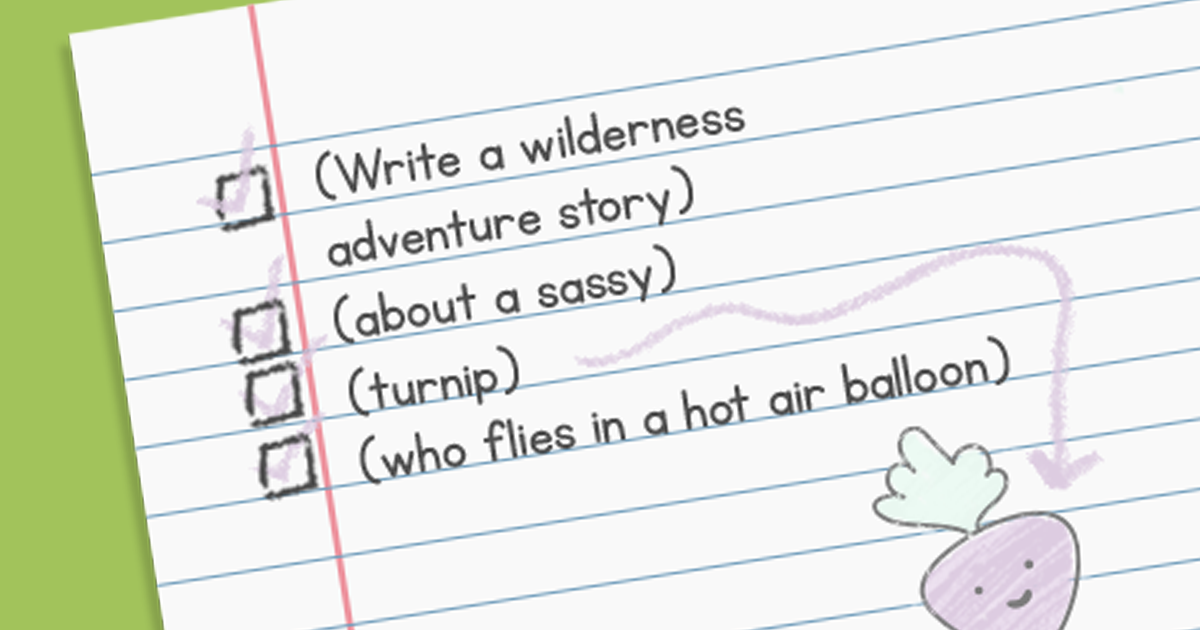
If you’re looking to inspire your students’ writing and creativity, turn to these fun and exciting writing prompts. Perfect for overcoming writer’s block or even starting a brand-new short story in a different narrative, creative writing prompts can help students begin a new piece with confidence.
Plus, these story starters can also encourage students to explore different genres while honing their writing skills. There are a lot of ways you can use writing prompts in your classroom. Try:
Reading a book in a genre, then having students use a story starter in that same genre.
Starting off class with 10 minutes of writing, using one of the prompts below. If you'd like, you can ask a volunteer to share their story! Students may be surprised by the variety of stories that are written based on the same prompt.
Using these prompts as an introduction to a creative writing unit.
Providing fast finishers with a way to stay busy — and have fun.
Using story starters to encourage students to write at home.
Adventure Story Starters
Take inspiration from classics like Treasure Island and newer popular series like The Bad Guys to explore how to write thrilling adventure stories. And to encourage students to begin writing their own adventure-focused stories, share these creative story starters:
You’re part of a pirate crew in search of a long-lost storied treasure trove. What is happening on the ship and where do you find the treasure?
You get the chance to use a time machine to meet one historical figure of your choice. Who do you go meet, and what will you do to explore that time period?
You receive a fortune in a fortune cookie that changes the course of your life. What does the fortune say, and what happens when it comes true?
Get students excited about adventure stories with these great books:
Fantasy Story Starters
Have fans of dragons, unicorns, wizards, and other mythical creatures in class? Encourage them to give fantasy writing a shot.
You’re on a quest through a hidden underground world that no one else has ever seen. What magical creatures do you come across? What do they look like, and how do they act?
There is a witch who lives in a nearby legendary haunted house. She puts a hex on you that needed to be broken by the time the clock struck midnight the next night. What kind of hex is it, and how do you break it?
You stumble into an enchanted forest. How did you find it, and what do you discover in it?
Check out these fun fantasy titles for more inspiration:
Sci-Fi Story Starters
Kids interested in STEM concepts will love science fiction! Try these prompts to see how your students combine science with their wildest imaginations.
- You’re the first person to ever set foot on Mars. What is it like? What do you explore first?
- You and your friend have the same dream in the middle of the night about a prophecy that involves another dimension. What is the prophecy, and what is this other dimension? What do you and your friend have to do to reach and alter this dimension?
- After NASA discovers a whole new world of giants in a nearby nebula, they send a team of scientists through a wormhole to study them. You are one of the scientists on board. What does the journey feel like? What do the giants look like in this world?
Plus, find great kid-friendly sci-fi here:
Genre Scrambler Story Starters
Have some fun with genre studies by combining them! Try these prompts to get started:
- You are on an expedition in the Arctic and discover a new species of animals living in the harsh climate that no one has ever seen before. What kind of species is it, and what characteristics do they have?
- You’re walking home from school and notice that the front door of a neighbor’s house is wide open, and no one is in sight. The old man who normally lives there is nowhere to be found. Curious, you go into the house and find that everything is fake: the furniture, the food, the technology, etc. In fact, the whole property is made of plastic, even the grass and trees! What happened to the old man who lives here? Why does this house exist, and why is everything fake?
- You are a child living in the early 1800s in an unnamed country when an asteroid hits, releasing aliens that want to make contact with your leaders. What do these aliens want? How does everyone react?
Shop popular books of all genres that will inspire young writers below! You can find all books and activities at The Teacher Store .

April Writing Prompts for Daily Writing About National Days
It’s a spring bloom of 32 writing prompts for daily writing in April based on national days celebrations! Your students will love the wide variety and the bonus Easter escape room.

Have you ever thought about using the national days to create daily writing prompts? It’s a great idea, but it can involve a bit of extra work for a teacher to find school and age appropriate prompts. Obviously you don’t want your students writing about National Margarita Day!
From my first year of teaching, I used daily writing prompts based on a calendar of national days. I found the free calendars at the Teacher Created online store. Every morning, we’d have a five minute chat about the prompt of the day, perhaps watch a short video, and then get started writing right away.
When students have a few minutes to access background information and talk about the topic, they get engaged and actually look forward to writing every day. That’s why I love creating these daily writing journals for you. I’ve made it simple for you to have a wide variety of prompts and suggestions for teacher-curated websites to enhance the daily writing prompt.
Table of Contents
Over the years, many students told me they were afraid of writing or they hated writing. However, after being in my class and experiencing so many engaging daily writing prompts, that changed to, “I love writing!”

April Daily Writing Prompts from National Month Celebrations
This month of April writing prompts includes National Poetry Month and National Jazz Appreciation Month.
There are so many different observances, that sometimes it’s hard to choose what topics to use. What I do is research the national days, choose topics that are appropriate for writing in grade 3, writing in grade 4, or writing in grade 5. Then I find videos or websites to engage and explore the topic. Finally, the students do the April writing prompts.

April is National Poetry Month
You can kick off National Poetry Month in April with this video with Amanda Gorman , available on PBS Kids. Amanda Gorman became the United States Youth Poet Laureate in 2017. Students can listen to her poem, “Talking Gets us There” and then you can have a deep classroom discussion. Finally, students can write about what it means to them. You can read more about the incredible Amanda Gorman on Wikipedia .
If you have a book of her poems, you could choose one or more to use as a poetry mentor text with your class. Just do a quick search on Amazon or elsewhere to find a variety of her books.
April is National Jazz Appreciation Month
Are you not sure how to celebrate National Jazz Appreciation Month ? Here’s the audio of a super fun selection of children’s songs played in the jazz style by the Jazz at Lincoln Center Orchestra. You can play the music for your class while they write. In fact, I’m tapping my feet while listening to the samples right now!
You can see an example of the Jazz Appreciation page from the April Writing Journal in this preview. With each prompt the students do self-editing with the CUPS system . This helps them become independent writers, day by day.
More Writing Prompts for April
There’s always a wide variety of prompts in every month. When you use these journals, you’ll be able to teach across the curriculum, easily and in a minimum of time. Students will develop a breadth of knowledge and you can teach to the depth and complexity you desire. If a topic intrigues you, extend the lesson!
You can use the prompts straight from the digital or PDF writing journal. With a simple search, you can find classroom appropriate videos to share with your students and activate their creative thoughts. The journal has a list of trusted sites for you, the teacher, to use to find background information to share with your class.
With all these topics to explore, you can really get your students turned on about learning and writing. The discussions that come out of these writing prompts when the class shares them are phenomenal. Do you want to know more about the April Writing Journal? You can view a preview in my TpT Store that shows many of the pages included.

Each page includes an image or clipart, a space for writing, and tools to edit using the CUPS system. I get many of the images from Deposit Photos with a money saving plan. The website links are for the teacher to use to look for more information and perhaps share with your young writers.
Literacy Themed April Writing Prompts
- International Children’s Book Day (It’s also Hans Christian Anderson’s birthday.)
- National School Librarian Day (Yay for librarians!)
- National Bookmobile Day (Do you remember those?)
Writing Prompts for Social Studies
- National Nebraska Day
- Colorado also has its own National Day
- National North Dakota Day
Writing About Science
- Audubon Day
- Dolphin Day
- Bat Appreciation Day (Bats are an important part of our ecosystems.)
- Sense of Smell Day (This is a fun day to explore a dog’s sense of smell.)
- Let’s not forget Earth Day! (With a focus on the three Rs: Reduce, Reuse, and Recycle.)
History and Biography Spring Writing Prompts
- National Sir Winston Churchill Day
- National Thomas Jefferson Day
- Jackie Robinson has a day honoring him in April. It’s perfect for teaching good character. Read the next section for free resources about Jackie Robinson.
- National Babe Ruth Day (Strike up a home run conversation about these baseball greats!)
- National Telephone Day (Hello! Hello! Mr. Bell, is that you?)
Jackie Robinson Day
April 15th isn’t just the dreaded tax day in the United States, it’s also Jackie Robinson Day. This is the perfect day or week to share videos and books about Robinson and how he broke through the racial barriers in the MLB. Every year in April, all players wear the number of Jackie Robinson’s jersey, out of respect for his contributions to baseball and the world.

This vector image is by lucky_xtian on Deposit Photos.
Marshallow Candy Bunnies and Chicks
These fabulous little bunnies and chicks start appearing in stores in March and April. What student wouldn’t want to learn about how these fun candies were invented and how they’re made today?

These cute and delicious goodies are covered in a week-long lesson plan. It’s part of what I call my “Sweet History” line of products! You can watch a video to see everything that’s included in this comprehensive resource, Close Reading and Writing Marshmallow Bunnies and Chicks.
Students read and annotate an original passage with the tools included. They practice Tier II vocabulary.
They answer comprehension questions. To culminate the week, they’ll write a narrative about a time when the marshmallow candies escaped from the Just Born candy factory!
This fun close reading and writing resource comes in both digital and printable versions. You choose what works best for you!
Escape From the Candy Factory
If you love marshmallow bunnies and chicks like kids do, you might want to share this escape room activity with your classroom peeps!

The Escape From the Candy Factory follows the same information as the Close Reading Marshmallow Candy Bunnies and Chicks, but in a fun escape room format. Watch this video clip to get your students hooked. The best part about this escape room is there’s no prep for you! Just print it and you’re ready to go. It also has an option in Google Slides (R).
Imagine how much fun your students will have reading about the history of Peeps (R) marshmallow bunnies and chicks. After watching the video hook, they’ll be eager for close reading the informational text to find all the clues and solve four challenges. In this engaging ELAescape room, they’ll learn how the candies are made, how they got started, and write a narrative about the escape. Their completion certificate is a jigsaw puzzle with bright bunnies and chicks.
This fun Easter escape room is part of a year-long bundle of holiday themed escape rooms. They include St. Patrick’s Day, Thanksgiving, Día de los Muertos, Valentine’s Day, and several winter holidays.
Try Five Days of a Daily Writing Journal For Free
If you haven’t tried my daily writing prompts before, you can try five days of writing prompts for free and see if it’s a good fit for your class and grade level. Go ahead and see what they’re all about. Download your PDF sample on this page . If it’s not for you, no problem! If you like it, here’s where you can find a daily writing journal for every month of the year.
You can pick up the full month of April Writing Prompts in my Teachers Pay Teachers store. I hope you find joy in teaching writing with them.

P.S. Do you know other teachers who might want to use this daily writing journal with their class? Please share the post with them!
P.P.S Do you have other writing ideas and activities you love to use in the spring? Let me know in the comments. I’d love to hear about them!
*Some of the links in this post contain affiliate or paid for advertising. When you click on the link, I may receive a small remuneration, at no extra cost to you.
Related posts:
One response.
One teacher told me about how she uses the plastic eggs in her class for a math activity. She puts a math problem in each egg and marks a number on the egg. Students go on an egg hunt. They solve the math problems and write them on an answer sheet. It sounds like a lot of fun, doesn’t it?
Leave a Reply Cancel reply
Your email address will not be published. Required fields are marked *
Save my name, email, and website in this browser for the next time I comment.
Copyright 2020-2023 |TeacherWriter LLC | All Rights Reserved.
Privacy Overview
Narrative Writing Prompts POWERPOINT
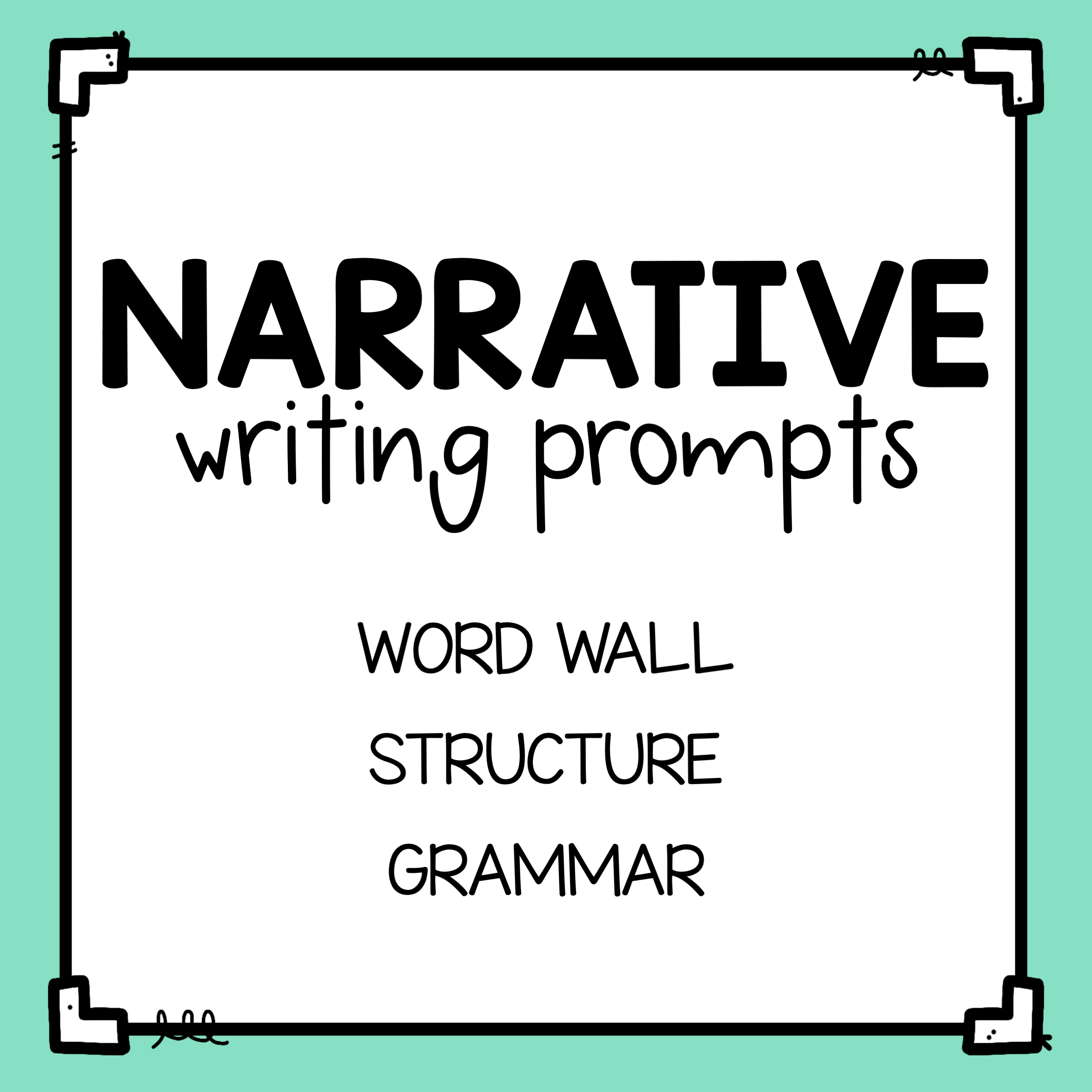
PowerPoints
Add to calendar
Add to favourites, description.
This resource will help your students to form ideas and plan a narrative writing text.
Choose from an assortment of real-world images to use as a writing prompt. Each slide contains three optional information boxes that you can open and close as needed to support student learning:
- Word Wall: relevant or topic-specific vocabulary
- Don’t Forget: reminders for grammar, spelling, punctuation and narrative elements
- Structure: a summary of narrative structure to use when planning
Additional information
Related products.
- Health Assessment Years 1 & 2: Protective Behaviours & Help Seeking Strategies EDITABLE
- Protective Behaviours Worksheet
- Health Assessment Years 1 & 2: Health Messages EDITABLE
- Asking for Help PICK & CLICK
- Partitioning 10 & Teen Numbers
- Finish the Decodable CVC Sentence Worksheets
Australian Curriculum V9
Lorem ipsum dolor sit amet, consectetur adipiscing elit.
Lorem ipsum/ Lorem ipsum/ Lorem ipsum
Email Address
Remember Me
Out of Credits
Looks like you’re out of credits.
Create an account
Reset password, item added to your cart.
0 items in the cart ( $ 0.00 )
writing a narrative story
All Formats
Resource types, all resource types.
- Rating Count
- Price (Ascending)
- Price (Descending)
- Most Recent
Writing a narrative story
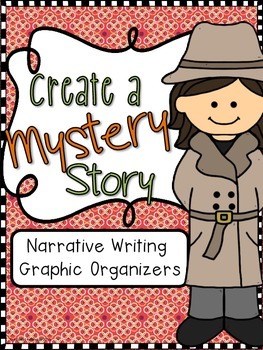
Narrative Writing : Create a Mystery Story

Narrative Writing : Create a Science Fiction Story
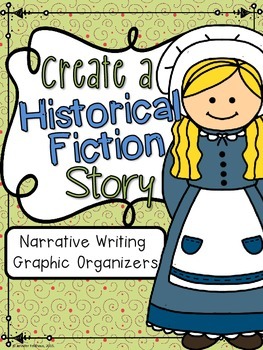
Narrative Writing : Create a Historical Fiction Story
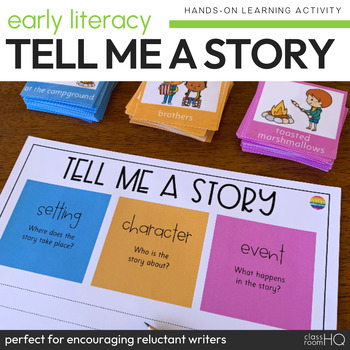
Tell Me A Story Narrative Writing Prompts + Worksheets

Writing a Personal Narrative Small Moment Seed Story

Story Elements Worksheet | Elements of a Story | Narrative Writing

- Google Apps™
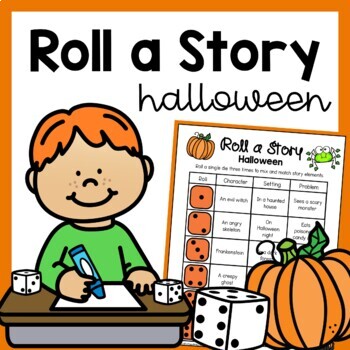
Halloween Roll A Story Writing Prompts - Halloween Narrative Writing

- Easel Activity
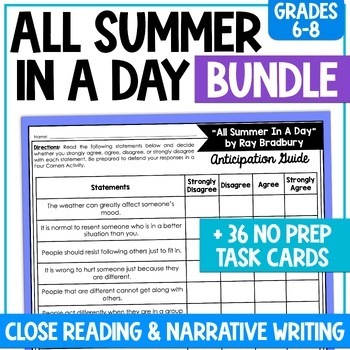
All Summer in A Day Short Story Unit - Narrative Writing Task - 36 Task Cards
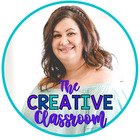
Writing a Mystery Story - Narrative Writing Presentation and Graphic Organizers
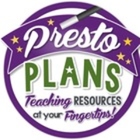
**SCHOOL YEAR BUNDLE** Roll- A - Story Narrative Writing Activity

How to Write a Short Story Lesson - Narrative Writing Pixar Inspired Activity

**FALL BUNDLE** Roll- A - Story Narrative Writing Activity
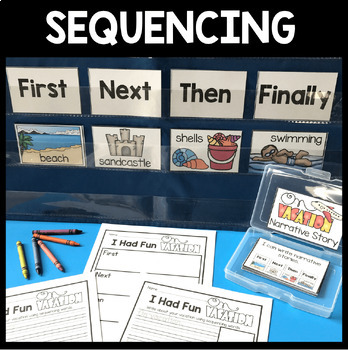
Narrative Writing - Telling a Story - Sequencing Events First Grade Kindergarten

Ralph Tells a Story Narrative Writing Ideas and Craft

My Ouch Story - A Narrative Writing Activity

NOT JUST "The End" Writing a Narrative Conclusion including ORIGINAL Stories
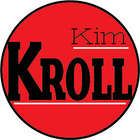
Fall Fictional Narrative Writing Project - A Spooky Story

Narrative Outline to Write a Story - Story Plan 40 Page PDF file
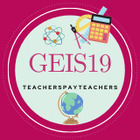
Writing Personal Narratives : Stories with a Beginning, Middle, and End

**SPRING BUNDLE** Roll- A - Story Narrative Writing Activity
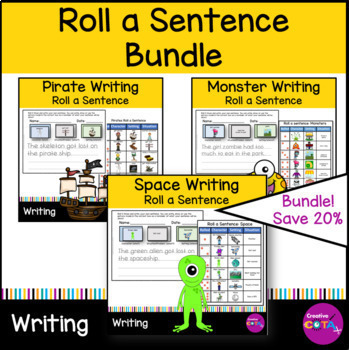
No Prep Narrative Writing Roll- a -Sentence or Story for Space, Pirates, Monsters

How to End a Story Unit | Narrative Writing , Conclusions, Twists, Plot Elements

How to Write a Narrative Story Information Poster Set/Anchor Charts

Do You Want to Build a Story ? Narrative Writing Lesson for Grades 1st, 2nd, 3rd
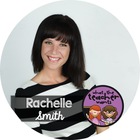
- We're hiring
- Help & FAQ
- Privacy policy
- Student privacy
- Terms of service
- Tell us what you think
Writing Prompt Guide for Teachers
Learn how to utilize writing prompts more effectively in the classroom. Download this guide for 5 secrets every teacher should know for successful writing prompts!
Yes, I'm in!
We respect your privacy. Unsubscribe at any time.
- Skip to primary navigation
- Skip to main content
- Skip to primary sidebar
Teaching Expertise
- Classroom Ideas
- Teacher’s Life
- Deals & Shopping
- Privacy Policy
20 Inspiring Narrative Writing Activities
February 9, 2023 // by Seda Unlucay
Help kids unleash their imagination and explore the world of storytelling with these twenty narrative writing ideas! From exciting adventures to heartfelt moments, these prompts will inspire them to create captivating and imaginative tales that will keep their readers engaged from start to finish. Whether they want to explore the fantastical or delve into real-life situations, these ideas are sure to spark their creativity and get their stories off the ground.
1. Master the Craft of Storytelling with Short Stories
Explore the power of using graphic organizers to plan and develop a short story. The focus of this lesson is on using clear and concise language to effectively communicate ideas.
Learn More: Apples and Bananas Education
2. Story Writing for Elementary Students
These colorful picture prompts provide a starting point for a captivating story filled with vivid descriptions and rich characters. It’s an opportunity to weave a tale that transports readers to a different world, where they can experience the thrill of adventure and the depth of emotions.
Learn More: Raise The Bar Reading
3. Support Student Understanding with Drawings
Drawing pictures to tell a story allows children to use their imagination and creativity to bring the story to life while improving their literacy skills and building their confidence.
Learn More: Keeping My Kiddo Busy
4. Journal Writing for Reluctant Writers
Even reluctant writers are sure to enjoy keeping a diary by writing from the perspective of their favorite animal. Invite kids to grab their notebooks and let their imagination run wild as they become a lion, dolphin, or even a butterfly for the day!
Learn More: That Teaching Spark
5. Review Elements of Narrative Writing with a Video
This beautifully animated video features Tim and Moby who walk kids through the process of building a story by including details about their childhood, their family, and their hobbies.
Learn More: Brain Pop
6. How to Tell Memorable Stories
This Powerpoint presentation teaches kids about narrative writing through colorful slides, interactive activities, and clear explanations. It covers key elements of storytelling such as character, setting, plot, and resolution, as well as tips for avoiding common mistakes and improving their writing.
Learn More: Twinkl
7. Self-Assessment for Components of Narrative Writing
This self-assessment for narrative writing allows students to reflect on their own work and evaluate their skills in areas such as plot development, character development, use of descriptive language, and overall coherence.
8. Once Upon a Picture
This collection of lovingly curated pictures is sure to evoke emotions and stimulate imagination, helping kids create vivid and detailed narratives. They provide a visual reference point for setting, characters, and events, and can suggest themes, motives, and even plot twists!
Learn More: Once Upon A Picture
9. Read Mentor Texts That Bring Characters to Life
Reading narrative writing mentor texts helps in improving writing skills, gaining inspiration and creative ideas, learning different writing techniques, understanding the narrative structure and character development, and enhancing vocabulary and syntax. By reading the works of successful authors, students can get a deeper insight into the writing process and develop their own unique voice.
Learn More: Mrs. Winter’s Bliss
10. Use an Anchor Chart to Build Daily Writing Habits
The benefits of using a narrative writing anchor chart include providing clear writing expectations while helping students understand the structure of a story. Additionally, they can serve as a visual reference for students to refer to during the writing process.
11. Descriptive Writing Activity
Sensory detail-based narrative writing help bring the setting, characters, and events to life, making the story more engaging and memorable. This activity can also help develop emotional intelligence and empathy, as it encourages the writer to think about how the world feels about their characters.
12. Create Complex Characters
These character traits writing task cards are educational tools designed to help students identify and describe the personality traits of fictional characters. The cards provide prompts and writing exercises to guide students as they analyze the actions, thoughts, and behaviors of characters in a story.
Learn More: Teachers Pay Teachers
13. Roll and Write
Start by giving each child a piece of paper and a dice. Based on the number they roll, they are given a setting, character, or plot element to incorporate into their story. Why not have kids share their stories with the group, encouraging them to listen and appreciate each other’s creative expression?
14. Fold a Story
FoldingStory is a free online game where students write one line of a story and pass it on. They will be delighted to see how their simple idea turns into a wild tale!
Learn More: Folding Story
15. Writer’s Notebook Bingo Cards
These writer’s notebook Bingo cards feature different prompts and ideas related to narrative writing, such as “Show, don’t Tell”, “Vivid Description”, “Point of View”, and more. Students will not only enjoy playing Bingo but learn how to apply these writing techniques to their own stories.
Learn More: Corbett Harrison
16. Try an Online Visual Story
With Storybird, students can choose from a diverse collection of art to create their own unique stories. Each illustration is carefully selected to evoke emotion, spark imagination, and inspire creativity. The platform is user-friendly and intuitive, allowing anyone to easily create stories in minutes, without any prior experience.
Learn More: Story Bird
17. Try Story Cubes
Rory’s Story Cubes is an engaging game where players roll dice with symbols on them and use the symbols to come up with imaginative stories that they can write down or share aloud. It’s suitable for children of all ages and can be played solo or with friends.
Learn More: Story Cubes
18. Explore the Elements of Narrative Writing
In this lesson, students will learn to develop characters, settings, and plots while using descriptive language and sensory details. By using a story map, students can see the structure of a story and learn to build tension, conflict, and resolution.
Learn More: Read Write Think
19. Focus on Character and Dialogue
For this hands-on sorting activity, students are given a set of jumbled words and asked to sort them into meaningful sentences to create effective narrative dialogue.
Learn More: The Teacher Studio
20. Narrative Writing Pyramid
After reading a story, students can use this Narrative Pyramid to organize the characters, setting, and events. This activity helps to provide a clear understanding of the story’s structure and how the elements fit together to form a compelling tale.

IMAGES
COMMENTS
These writing prompts for second grade make differentiation EASY! Each of the 60 second grade writing prompts comes with multiple options for drafting paper (with built-in support
Writing prompts are a tool for teachers and writers, which challenge writers to write about topics outside of their usual subject matter. Writing prompts help writers tap into their creativity in a different way, which helps them learn and grow. More Prompts for Narrative Writing. There are so many lists of prompts for narrative writing.
When teaching narrative writing, many teachers separate personal narratives from short stories. In my own classroom, I tended to avoid having my students write short stories because personal narratives were more accessible. ... which is available on her Teachers Pay Teachers site. ... I ventured on to YouTube for more ideas to help guide me ...
A narrative can spark emotion, encourage reflection, and convey meaning when done well. Narratives are a popular genre for students and teachers as they allow the writer to share their imagination, creativity, skill, and understanding of nearly all elements of writing. We occasionally refer to a narrative as 'creative writing' or story writing.
5. Your shoe must have a story to tell. Tell it. 6. Your class grew plants as a science project. One day you looked at your plant and saw. something really strange had grown there. 7. Write a story about what it would be like if you woke up one morning with wings.
While I am a huge advocate of assigning writing to students at the beginning of the school year, middle school ELA and high school English teachers can assign narrative writing at any point in the year.In this blog post, I'm going to share 10 narrative writing prompts with you! Teaching students about narrative writing and assigning a narrative writing project helps students work on their ...
31 Narrative Writing Prompts For 5th Grade. Narrative writing helps students develop storytelling skills by reflecting on their own experiences, or using their imagination, and writing about a series of events. These assignments encourage students to think about the order of events, practice some of the most important aspects of writing, and ...
Teaching Narrative Writing - Tips and Ideas. Teaching narrative writing is one of my favorite things! ... My name is Meg and my passion is supporting teachers as they use best practices to create meaningful, engaging, and effective learning opportunities for their students. With more than 25 years of classroom experience and a degree in ...
Browse writing narrative resources on Teachers Pay Teachers, a marketplace trusted by millions of teachers for original educational resources. Log In Join. Cart is empty. Total: $0.00. View Wish List. ... Bulletin board ideas. Posters. Word walls. Printables. Seasonal. Holiday. Black History Month. Christmas-Chanukah-Kwanzaa. Earth Day. Easter ...
Explore personal narrative writing in your ELA classes this year with graphic organizers, writing prompts and more activities created by teachers for teachers like you! Aligned with both TEKS and the Common Core ELA curriculum, this collection of printable and digital resources is stocked with everything you need to plan lessons on writing ...
Draw two pictures and write two parts of a story. 3.) Draw a picture and complete the sentence on dotted lines. 4.) Draw a picture and write on dotted lines. 5.) Draw three pictures and write a sentence for three parts of a narrative. You can pick the format that suits your students. Meet them where they are at!
Tell a story about what you would wish for and why. Write a story called, "The Luckiest Day of My Life.". Imagine you went to the zoo and could take home any animal for the day. Tell a story about your time together. Write a silly story that uses these words: airplane, grapes, elephant, and book.
Narrative writing is an important step not only in learning to write but also in learning to reflect and think deeper. Whether students are journaling or making story charts and discussing their answers in class, the following writing prompts are a great place to start with your 3rd graders. Using These Prompts. You can use these prompts as ...
There are a lot of ways you can use writing prompts in your classroom. Try: Reading a book in a genre, then having students use a story starter in that same genre. Starting off class with 10 minutes of writing, using one of the prompts below. If you'd like, you can ask a volunteer to share their story!
Without further ado, here are writing prompts for teachers that you can try now so you have examples to share next year: 1. Share your heart. I first learned this from poet Georgia Heard, but I've seen many writing teachers share it. Draw a heart, then write all the things you love inside. Use this heart throughout the year to remind you of ...
This month of April writing prompts includes National Poetry Month and National Jazz Appreciation Month. There are so many different observances, that sometimes it's hard to choose what topics to use. What I do is research the national days, choose topics that are appropriate for writing in grade 3, writing in grade 4, or writing in grade 5.
This resource will help your students to form ideas and plan a narrative writing text. Choose from an assortment of real-world images to use as a writing prompt. Each slide contains three optional information boxes that you can open and close as needed to support student learning: Word Wall: relevant or topic-specific vocabulary.
Browse writing a narrative story resources on Teachers Pay Teachers, a marketplace trusted by millions of teachers for original educational resources. ... Narrative Writing Prompts for Back to School, September & More . Show more details. ... Teaching narrative writing in an engaging way with these activities based on the story Ralph Tells a ...
Writing Prompt Guide for Teachers. Learn how to utilize writing prompts more effectively in the classroom. Download this guide for 5 secrets every teacher should know for successful writing prompts! Yes, I'm in! GET THE FREE GUIDE. We respect your privacy. Unsubscribe at any time.
These character traits writing task cards are educational tools designed to help students identify and describe the personality traits of fictional characters. The cards provide prompts and writing exercises to guide students as they analyze the actions, thoughts, and behaviors of characters in a story. Learn More: Teachers Pay Teachers. 13.